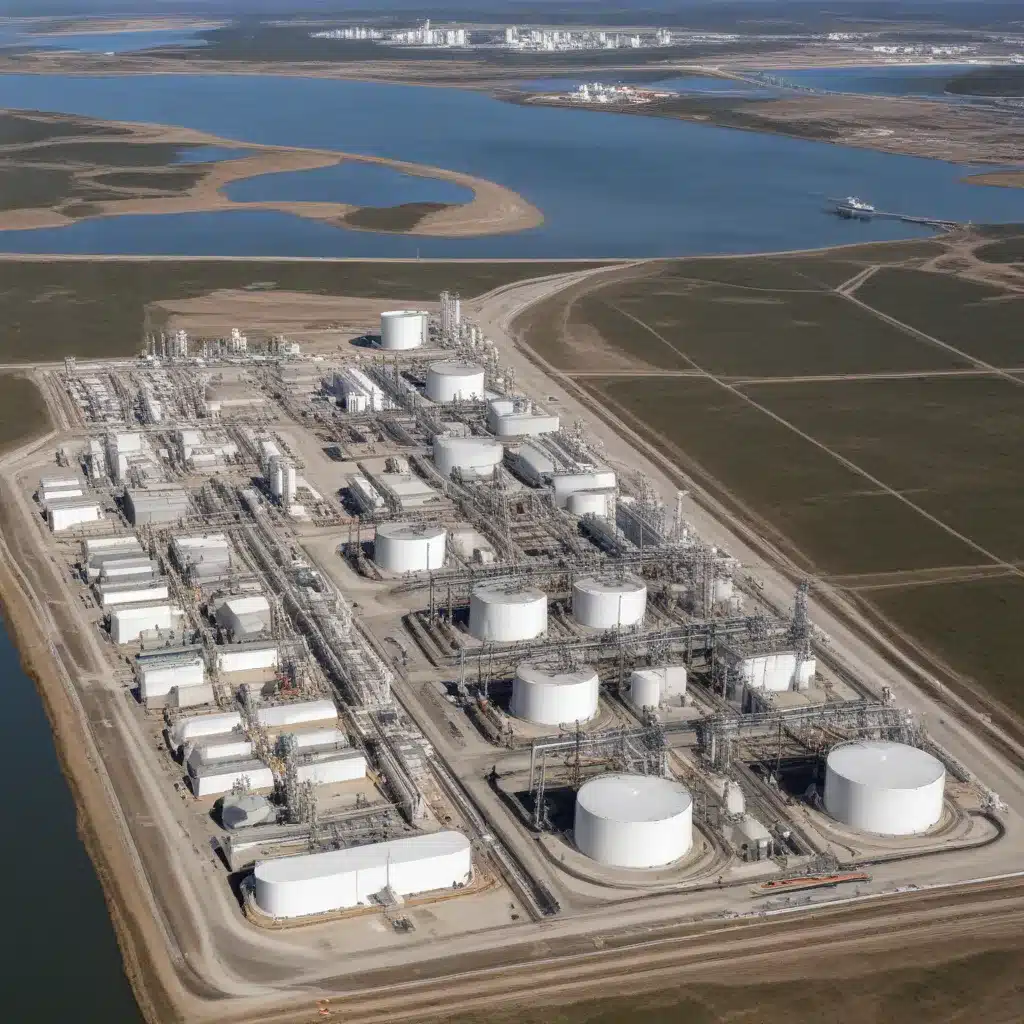
The Proposed LNG Terminal and Its Impacts
The Rio Grande LNG Terminal, a proposed liquefied natural gas (LNG) export facility in Cameron County, Texas, represents a significant expansion of fossil fuel infrastructure in the Rio Grande Valley. Planned to have a total capacity of 27 million metric tons per annum (mtpa) of natural gas exports, this terminal would be one of the largest of its kind in the United States.
The project’s developer, NextDecade, has faced numerous challenges and setbacks in recent years, including delays in securing key contracts and a withdrawal of interest from the French utility company Engie due to concerns over the high methane emissions associated with the gas that would be sourced from Texas oil fields. Nevertheless, the project has made incremental progress, with NextDecade recently announcing plans to incorporate a carbon capture and storage (CCS) system that it claims will capture at least 90% of emissions from the previously approved terminal.
However, this CCS proposal has been met with significant skepticism and opposition from local community groups and environmental organizations. Rebekah Hinojosa, the Gulf Coast Campaign Representative for the Sierra Club, described NextDecade’s CCS plans as “a scam that won’t reduce Rio Grande LNG’s harmful pollution, and does nothing to reduce greenhouse gas emissions when the gas is fracked, produced, exported overseas, and burned.”
Private Equity’s Involvement and the Climate Implications
The Rio Grande LNG Terminal is not just a local issue, but part of a broader trend of private equity firms investing heavily in the LNG industry. According to research by the Private Equity Climate Risks (PECR) project, private equity has been one of the primary financial drivers behind the expansion of the LNG industry, investing in 85% of currently operating LNG terminals and 73% of proposed terminals.
PECR’s analysis found that private equity-backed LNG terminals are on track to emit over 96 million metric tons of CO2 equivalent per year (mt CO2e/yr), the equivalent emissions of approximately 242 natural gas-fired power plants annually. This is particularly concerning given the growing understanding that LNG is not necessarily a cleaner alternative to coal when its full lifecycle emissions are considered.
One prime example of private equity’s involvement is Global Infrastructure Partners’ (GIP) recent investment in the Rio Grande LNG project. GIP, a private equity firm managing around $100 billion in infrastructure assets, became a majority investor in the project’s first phase, owning at least 46% of the terminal. This investment provided the critical financing commitment needed for the project to reach its final investment decision (FID) and move forward with construction.
Environmental Justice Concerns and Community Opposition
The Rio Grande LNG Terminal is not just an environmental issue, but also a matter of environmental justice. The project is located in the Rio Grande Valley, a region that is home to predominantly marginalized communities, including a significant Latino population. Studies have shown that the LNG facilities in Brownsville, Texas, where the Rio Grande LNG Terminal is situated, would create air pollution problems that would disproportionately impact these communities, potentially violating federal environmental justice laws.
Local residents, shrimpers, fishermen, and community organizations have fiercely opposed the Rio Grande LNG Terminal and the associated Rio Bravo Gas Pipeline, citing concerns over the project’s potential impact on wetlands, wildlife, and the region’s tourism industry. The Sierra Club, the city of Port Isabel, and other grassroots organizations have filed multiple lawsuits challenging the project’s regulatory approvals, arguing that the socioeconomic and environmental justice studies were flawed and that the project is not in the public interest.
Moreover, the project is being constructed on the sacred land of the Carrizo/Comecrudo Tribe of Texas, who have voiced their concerns and opposition to the terminal. In April 2023, members of the tribe gathered to express their concerns over the terminal and nearby SpaceX projects, highlighting the lack of meaningful consultation and the disregard for their cultural heritage.
The White House’s Pause on LNG Exports and the Uncertain Future
The expansion of the LNG industry, including the Rio Grande LNG Terminal, has recently faced a significant setback. In January 2024, the White House announced that it would pause U.S. Department of Energy (DOE) export authorizations for LNG export projects, citing the need to re-evaluate the economic and environmental impacts of these facilities, including their contribution to the climate crisis.
This announcement has delayed the progress of numerous proposed LNG projects, including multiple private equity-backed projects that do not yet have DOE export authorizations. The pause on LNG export approvals could significantly impact the Rio Grande LNG Terminal, as it is one of the projects that still requires DOE authorization to proceed with construction and exports.
Conclusion: The Need for Sustainable and Equitable Energy Solutions
The Rio Grande LNG Terminal represents a concerning expansion of fossil fuel infrastructure in a region already disproportionately burdened by environmental and economic challenges. The project’s potential impacts on the local community, the environment, and the climate are significant and deserve close scrutiny.
As the White House’s pause on LNG export approvals demonstrates, there is growing recognition of the need to prioritize sustainable and equitable energy solutions that do not perpetuate the harm caused by the fossil fuel industry. Moving forward, it is crucial that policymakers, investors, and community stakeholders work together to develop energy projects that truly serve the best interests of the people and the planet.
The Joint Action for Water blog is committed to amplifying the voices of those on the frontlines of water and sanitation issues, and to advocating for solutions that promote environmental justice and community resilience. By sharing the stories and perspectives of those impacted by projects like the Rio Grande LNG Terminal, we can inspire action and drive meaningful change.
To learn more about the Joint Action for Water community and our ongoing efforts, please visit our website.

